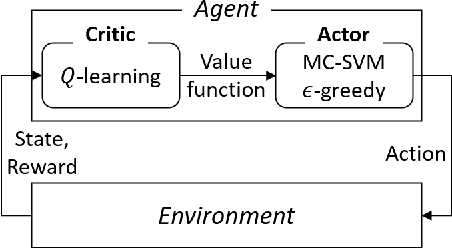Hong-Cheol Choi
Multi-Agent Based Transfer Learning for Data-Driven Air Traffic Applications
Jan 23, 2024Abstract:Research in developing data-driven models for Air Traffic Management (ATM) has gained a tremendous interest in recent years. However, data-driven models are known to have long training time and require large datasets to achieve good performance. To address the two issues, this paper proposes a Multi-Agent Bidirectional Encoder Representations from Transformers (MA-BERT) model that fully considers the multi-agent characteristic of the ATM system and learns air traffic controllers' decisions, and a pre-training and fine-tuning transfer learning framework. By pre-training the MA-BERT on a large dataset from a major airport and then fine-tuning it to other airports and specific air traffic applications, a large amount of the total training time can be saved. In addition, for newly adopted procedures and constructed airports where no historical data is available, this paper shows that the pre-trained MA-BERT can achieve high performance by updating regularly with little data. The proposed transfer learning framework and MA-BERT are tested with the automatic dependent surveillance-broadcast data recorded in 3 airports in South Korea in 2019.
Safety-guaranteed Reinforcement Learning based on Multi-class Support Vector Machine
Jun 12, 2020



Abstract:Several works have addressed the problem of incorporating constraints in the reinforcement learning (RL) framework, however majority of them can only guarantee the satisfaction of soft constraints. In this work, we address the problem of satisfying hard state constraints in a model-free RL setting with the deterministic system dynamics. The proposed algorithm is developed for the discrete state and action space and utilizes a multi-class support vector machine (SVM) to represent the policy. The state constraints are incorporated in the SVM optimization framework to derive an analytical solution for determining the policy parameters. This final policy converges to a solution which is guaranteed to satisfy the constraints. Additionally, the proposed formulation adheres to the Q-learning framework and thus, also guarantees convergence to the optimal solution. The algorithm is demonstrated with multiple example problems.
 Add to Chrome
Add to Chrome Add to Firefox
Add to Firefox Add to Edge
Add to Edge